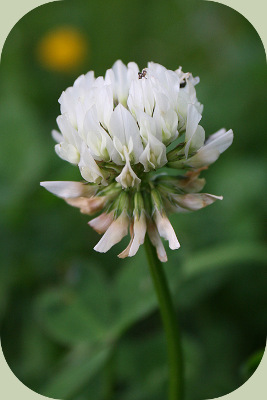Garden Companion Planting

Garden Companion Planting
Garden companion planting is wonderful if you have ever dreamed of growing your own edible garden. Companion planting is the concept of planting mutually supportive species together so that all the plants benefit each other.
How does companion planting work?
Companion planting works by putting together plants that assist each other to grow well, plants that repel insects, and even plants which repel other plants. The key is to understand which plants will be mutually beneficial and which are not mutually beneficial.
Why bother using companion planting?
Planting your garden intelligently, utilizing the available knowledge about the different positive and supportive relationships allows you to grow you plants in a very sustainable and ecologically friendly manner. Using these techniques will potentially allow you to garden without the use of any pesticides or herbicides.
Some benefits to consider for companion planting are:
- repelling damaging insects
- habitat for predators of pest species
- dynamic accumulation of nutrients
- nitrogen fixing
- moisture retention
What are some well-known examples?
Garden companion planting has been used for a long time as an approach to grow food and medicinal plants, while minimizing parasites and maximizing health of the plants. Some groups of companion plants are well-known and have been utilized by gardeners and farmers for a long time.
Tomatoes and carrots are a classic example of garden companions. Both of them also grow well with onions, chives, leeks and lettuces. The chives, onions and leeks help repel potentially harmful insect pests form the carrot.

Clover and comfrey are also mutually beneficial and are great planted together among trees in orchards. Clovers, like other members of the legume family are nitrogen fixers (which means they pull nitrogen from the air and fix it into the soil where other plant roots can benefit from the nutrient. Meanwhile, comfrey is a dynamic accumulator that collects nutrients from deep in the soil via its tap root and then puts them into its leaves. As the leaves die, they make those nutrients available to other plants.
Be More Prepared For Your Next Outdoor Adventure!

Don't leave without knowing these six essential survival skills. Our free survival mini guide reveals the strategies of:
- Shelter & fire to prevent the number one cause of death
- Obtaining clean water to avoid life-threatening dehydration
- Common wild survival foods and other critical skills!

Amaranth, also known as pigweed is another great dynamic accumulator. It grows well with corn, onions, pepper and eggplant. It helps tomatoes to be more resistant to harmful insects and also helps potatoes yield more abundantly. It also helps loosen soil for root vegetables such as beets, carrots and radishes. Since it is a weedy species, harvest it and keep it thinned. It happens to produce both edible leaves and seeds.
Kale is a great cool weather crop that grows well with potatoes or late season cabbage. It can handle a light freeze, and the freeze will even improve its flavor.
The three sisters is probably the best known garden companion planting group. The three sisters are corn, beans and squash. This method not only benefits all three, but also maximize the use of space. Corn acts as a trellis for the beans, while the squash grows in the space between the individual corn plants.
Bigger Picture Gardening
Approaching the use of companion planting in a more large scale way, you can consider creating an edible forest garden or food forest. This design imitates the relationships, structures and energy flow of a natural forest. For more information on this design method, check out our permaculture food forest article.
Closing Thoughts
Garden companion planting is one method to successfully grow your own edible, medicinal or even purely aesthetic garden. This method is simple, rewarding and encourages us to learn more about the interrelated nature of the natural world. This is one of the many methods used in sustainable agricultural practices used by the permaculture approach.
By the way, a big part of why we love homesteading & permaculture skills so much is because they are a natural extension of learning about wilderness survival (both fields are all about self-sufficiency and working with nature to satisfy needs). An understanding of survival not only helps you become a better permaculturist, it empowers you with life-saving outdoor skills to keep you safe when out in nature. Right now you can get a free copy of our mini survival guide here, where you'll discover six key strategies for outdoor emergencies, plus often-overlooked survival tips.
Further Resources
For further resources on growing food using companion planting, check out this link: Carrots Love Tomatoes article on MotherEarthNews
Interested in learning more about sustainable design skills? Check out Alderleaf's Permaculture Courses.

About the Author: Filip Tkaczyk is a periodic guest teacher at Alderleaf. He also wrote the field guide Tracks & Sign of Reptiles & Amphibians. Learn more about Filip Tkaczyk.
Return from Garden Companion Planting back to Permaculture Articles
Is The Essential Wilderness Survival Skills Course Right for You? Take the "Online Survival Training Readiness" Quiz
See for yourself if this eye-opening course is a good fit for you. It takes just a few minutes! Get your Survival Training Readiness Score Now!

Grow Your Outdoor Skills! Get monthly updates on new wilderness skills, upcoming courses, and special opportunities. Join the free Alderleaf eNews and as a welcome gift you'll get a copy of our Mini Survival Guide.

 The Six Keys to Survival: Get a free copy of our survival mini-guide and monthly tips!
The Six Keys to Survival: Get a free copy of our survival mini-guide and monthly tips!
Learn more